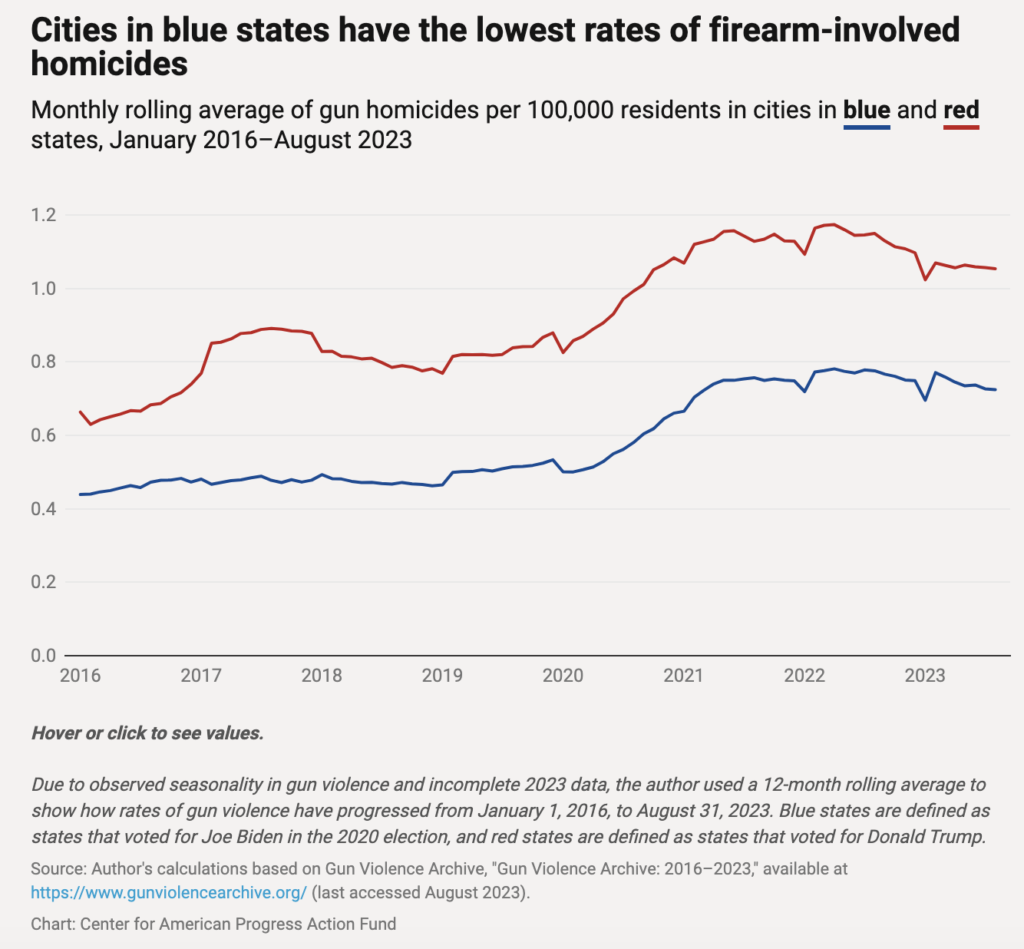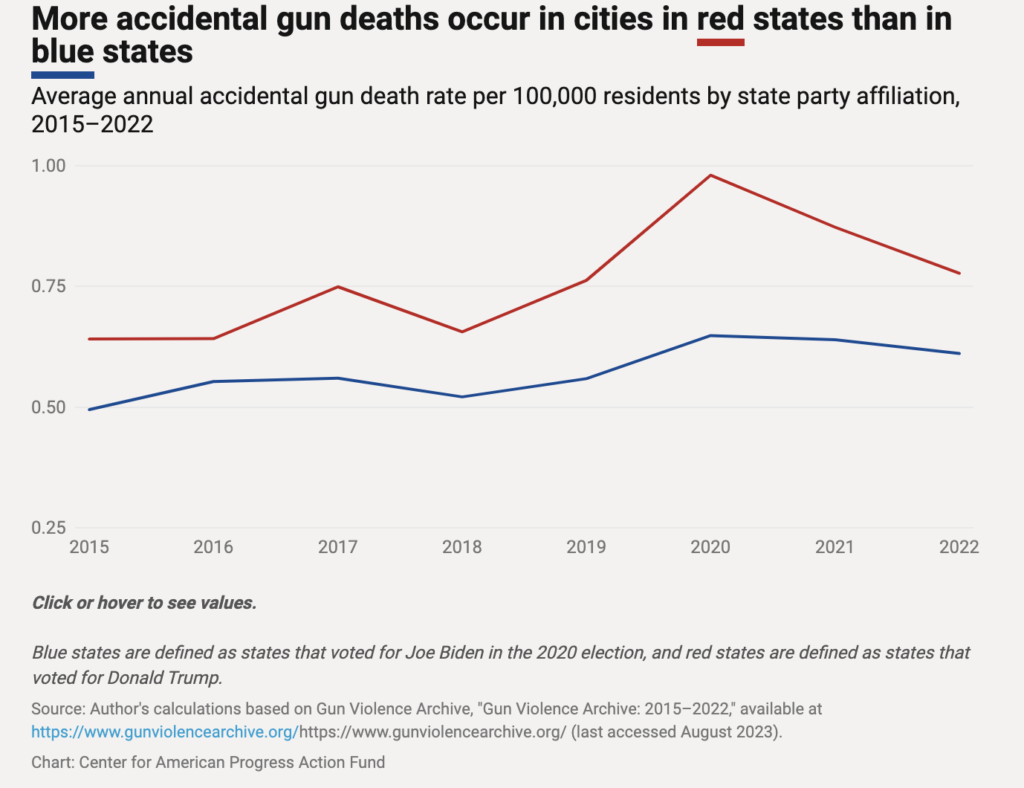Gun violence is a pervasive issue that affects communities across the United States. The horrific realities of school and hate-motivated shootings, coupled with daily occurrences of gun violence, underscore the urgency of addressing this crisis. It is no surprise that Americans rank gun violence as a top concern for Congress. To combat gun violence, we must come together to pass common-sense gun laws and proactively address its root causes. Unfortunately, the response to this epidemic has been marred by political maneuvering and misinformation
Rather than enacting stricter gun laws to address the gun violence crisis, some Republican leaders have chosen to weaponize the issue for political gains. They use misinformation to fuel fears of “Democrat-controlled” cities, deflecting attention from their own public safety shortcomings. However, the data on gun violence homicides in America tell a different story.
Original analysis conducted by the Center for American Progress Action Fund reveals that blue-state cities, regardless of which party leads them, are consistently safer from gun violence when compared to red-state cities. These findings challenge the blame-game politics employed by some Republican lawmakers.

While gun violence is a concern in both cities and rural areas, the notion that it is uniquely tied to “Democrat-run” cities is not supported by the data. Red states have experienced higher murder rates than blue states over the past two decades. Even when removing the largest cities from the analysis, the overall murder rate remains higher in red states.
Not only do red-state cities experience higher gun homicides, but they also have more accidental gun deaths. This difference highlights that the issue is not solely a crime problem but also a gun problem. The surge in gun violence in recent years has been significant, with red-state cities witnessing larger increases in gun violence rates from 2018 to 2021 compared to their blue-state counterparts.

While gun violence rates have risen nationwide, preliminary data suggest that 2023 will see the largest single-year decline in murders in U.S. history, with the most substantial drops occurring in blue-state cities. This challenges the narrative that blue cities are responsible for increasing gun violence.
Preemption laws, which strip local governments of their ability to pass firearm-related ordinances, hinder local officials’ efforts to address gun violence. These laws threaten public safety by disregarding local variations and stifling innovation in gun violence prevention strategies. In 42 states, preemption laws bar local governments from passing firearm-related ordinances. Gun violence is further exacerbated by the flow of guns across state lines. Even when states have strong gun laws, crime guns often come from neighboring states with weaker regulations, making it challenging for cities to curb gun violence effectively.
Addressing gun violence is a complex challenge, and political narratives must not overshadow the data and facts. To combat this crisis effectively, we must focus on enacting stronger gun laws and promoting gun safety. The complexities of gun violence demand comprehensive solutions, and political finger-pointing will not lead to progress. It is essential that we continue working together to prioritize public safety and saving lives.
